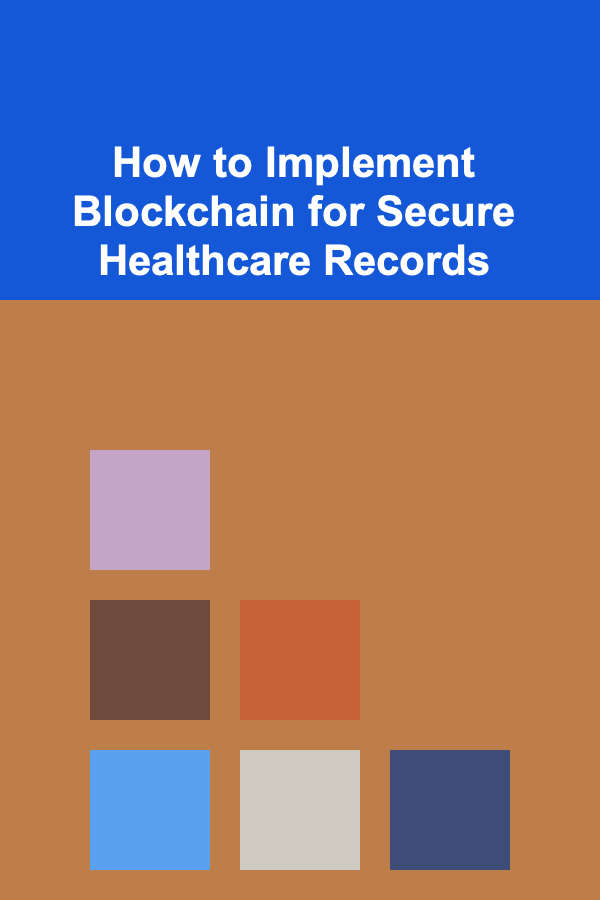
10 Ways to Improve Your Data Analysis Skills as an RA
ebook include PDF & Audio bundle (Micro Guide)
$12.99$7.99
Limited Time Offer! Order within the next:
Not available at this time

Data analysis is a crucial skill for any research assistant (RA). As an RA, you are likely to spend a significant amount of time working with data, cleaning it, running statistical tests, and interpreting the results. The ability to analyze data effectively can make the difference between an insightful, impactful research project and one that lacks depth or accuracy. Whether you're new to data analysis or looking to improve your skills, here are ten actionable strategies to enhance your data analysis capabilities.
Master the Fundamentals of Statistics
Before diving into complex analysis methods, it's important to have a solid understanding of statistical concepts. This includes knowing the difference between descriptive and inferential statistics, understanding distributions, hypothesis testing, and familiarizing yourself with the various types of data (e.g., continuous, categorical). The better your grasp of statistics, the more effectively you will be able to approach data analysis.
Key Areas to Focus On:
- Descriptive statistics: Mean, median, mode, standard deviation, and variance.
- Probability theory: Understanding distributions, probability densities, and Bayes' theorem.
- Hypothesis testing: T-tests, chi-square tests, ANOVA, etc.
- Correlation and regression: Learning how variables interact and predicting future values.
Having a strong statistical foundation will not only allow you to perform accurate analyses but also help you critically evaluate the methods and findings of other researchers.
Learn and Use the Right Software Tools
There are several data analysis tools available, each suited for different types of analyses. As an RA, you should familiarize yourself with a few key software tools that are commonly used in research. Some of these tools are more suitable for statistical analysis, while others are better for data visualization or cleaning.
Popular Tools for Data Analysis:
- R: A programming language and environment specifically designed for statistical computing and graphics. R is highly versatile and is widely used in academia.
- Python: With libraries such as Pandas, NumPy, and Matplotlib, Python is an excellent choice for data manipulation, analysis, and visualization.
- SPSS: A software package used for statistical analysis. It is user-friendly and popular in the social sciences.
- Stata: A powerful tool for data management and statistical analysis, particularly in economics and social science research.
- Excel: Though less powerful than specialized software, Excel is still widely used for basic data analysis and visualization.
Mastering one or more of these tools can significantly streamline your data analysis process. Invest time in learning how to use these tools efficiently, as they will make the process faster and more accurate.
Develop Strong Data Cleaning Skills
Raw data is rarely perfect. It is common to encounter missing values, outliers, duplicates, and formatting issues that can affect your analysis. Data cleaning is the process of preparing and transforming raw data into a format that is suitable for analysis. Without clean data, even the most sophisticated analysis techniques will produce inaccurate or misleading results.
Data Cleaning Tips:
- Handle missing values: You can either remove missing data points or impute them based on certain criteria.
- Identify and treat outliers: Use statistical methods to detect outliers and decide whether to remove them or adjust them.
- Standardize data formats: Ensure that dates, times, and categorical variables are in consistent formats.
- Remove duplicates: Always check for and remove duplicate rows that could skew your results.
By developing strong data cleaning skills, you'll ensure that your analysis is based on accurate and consistent data.
Learn Data Visualization Techniques
Data visualization is a powerful way to present your findings and make complex data more understandable. Visualization techniques such as bar charts, scatter plots, and histograms help researchers to identify patterns, trends, and outliers in their data. Learning how to visualize data effectively is key to both communicating results and gaining insights during the analysis process.
Tools and Techniques for Visualization:
- Matplotlib (Python) and ggplot2 (R) are popular libraries for creating visualizations.
- Tableau and Power BI are user-friendly tools for building interactive visualizations.
- Familiarize yourself with common types of visualizations:
- Bar charts and histograms: To show distributions.
- Scatter plots: To explore relationships between two variables.
- Box plots: To identify spread and outliers.
- Heatmaps: To visualize correlation matrices.
By mastering these visualization tools and techniques, you will be able to communicate your results more effectively to both technical and non-technical audiences.
Get Comfortable with Advanced Statistical Techniques
Once you have a solid grasp of basic statistics, you can start exploring more advanced techniques. These methods can uncover deeper insights and provide more accurate models for prediction or hypothesis testing. Some common advanced techniques include:
- Regression analysis: Learn linear and multiple regression to predict outcomes based on one or more variables.
- Factor analysis: Use factor analysis to identify underlying variables in complex data sets.
- Time series analysis: Learn how to analyze data points collected over time to identify trends, seasonal patterns, and forecasts.
- Machine learning: If your research involves large data sets, learning machine learning techniques can provide powerful methods for classification, clustering, and prediction.
These techniques can be daunting at first, but with practice and experience, they can greatly improve the sophistication and depth of your analysis.
Understand the Research Context
Data analysis does not happen in a vacuum. It is essential to have a deep understanding of the research context in which you are working. This involves understanding the research questions, hypotheses, variables, and methodologies used in the study. Without a clear understanding of the research context, you might misinterpret the data or draw incorrect conclusions.
Key Steps:
- Clarify research objectives: Make sure you understand the goals of the research project before beginning your analysis.
- Understand the variables: Know which variables are independent, dependent, and control variables.
- Review the literature: Familiarize yourself with relevant research in the field to ensure that your analysis aligns with existing findings.
By understanding the broader research context, you will be able to approach your data analysis with a clearer purpose and avoid common pitfalls.
Develop Strong Communication Skills
As an RA, you are often required to present your findings, whether to your supervisor, colleagues, or in published research papers. Strong communication skills are essential for conveying your analysis and its implications effectively. This involves both verbal and written communication.
Tips for Effective Communication:
- Write clear and concise reports: Ensure that your findings are presented logically, with appropriate charts, tables, and visualizations.
- Use storytelling: Present your analysis in a narrative format that highlights key insights and their significance to the research question.
- Tailor your communication: Adjust your level of detail and complexity depending on your audience (e.g., researchers, policymakers, general public).
The ability to communicate complex data in an understandable and compelling way is an invaluable skill for any RA.
Stay Organized
Working with data can quickly become overwhelming, especially when handling large datasets or multiple research projects. Staying organized is key to ensuring that you can manage your data efficiently and avoid mistakes.
Organizational Tips:
- Keep detailed notes: Document your thought process, decisions, and any challenges you face during your analysis.
- Use version control: Track changes to your data files and analysis code using tools like Git to ensure that you can revert to previous versions if needed.
- Create reproducible workflows: Use scripting languages like R or Python to create reproducible analysis pipelines, ensuring that others can follow your steps and verify your results.
By staying organized, you'll be able to manage your time effectively, ensure consistency, and avoid errors.
Collaborate with Others
Data analysis is often a team effort. As an RA, you will likely collaborate with researchers, other RAs, and faculty members. Collaborating with others not only enhances the quality of the research but also exposes you to different analytical techniques and perspectives.
Collaboration Tips:
- Seek feedback: Regularly share your analysis with others and be open to constructive criticism.
- Ask questions: Don't hesitate to ask colleagues for advice or clarification on unfamiliar techniques or software tools.
- Learn from peers: Collaborating with more experienced researchers is a great way to learn new skills and approaches to data analysis.
By working with others, you will have the opportunity to improve your own skills while contributing to the success of the research project.
Keep Learning and Stay Curious
Data analysis is a constantly evolving field. New techniques, software, and methodologies are introduced regularly, and it's important to keep learning to stay ahead. Whether it's attending workshops, reading research papers, or taking online courses, there are plenty of ways to expand your knowledge.
How to Stay Updated:
- Take online courses: Platforms like Coursera, edX, and DataCamp offer excellent courses on data analysis, statistics, and machine learning.
- Read academic papers: Stay updated with the latest research and trends in data analysis by reading academic journals and conferences.
- Join online communities: Participate in forums and discussion groups like Stack Overflow, Reddit, or LinkedIn groups to learn from others in the field.
The more you invest in learning and improving your data analysis skills, the more valuable you will be as a research assistant.
Conclusion
Improving your data analysis skills as an RA requires a combination of technical expertise, creativity, and collaboration. By mastering the fundamentals of statistics, learning the right tools, developing strong data cleaning and visualization skills, and staying organized and communicative, you will be well-equipped to handle any data analysis challenges that come your way. Keep learning, stay curious, and remember that data analysis is both an art and a science---your ability to unlock insights from data will play a crucial role in the success of your research.

How to Create a Fashion Lookbook for Each Season
Read More
How to Maintain Your Rental Property on a Budget
Read More
How to Mix High-End and Budget Finds for a Designer Look
Read More
How to Plan Conference Catering: A Checklist for Delicious and Efficient Services
Read More
How to Use a Checklist for Effective Home Organization
Read More
How to Implement Blockchain for Secure Healthcare Records
Read MoreOther Products

How to Create a Fashion Lookbook for Each Season
Read More
How to Maintain Your Rental Property on a Budget
Read More
How to Mix High-End and Budget Finds for a Designer Look
Read More
How to Plan Conference Catering: A Checklist for Delicious and Efficient Services
Read More
How to Use a Checklist for Effective Home Organization
Read More